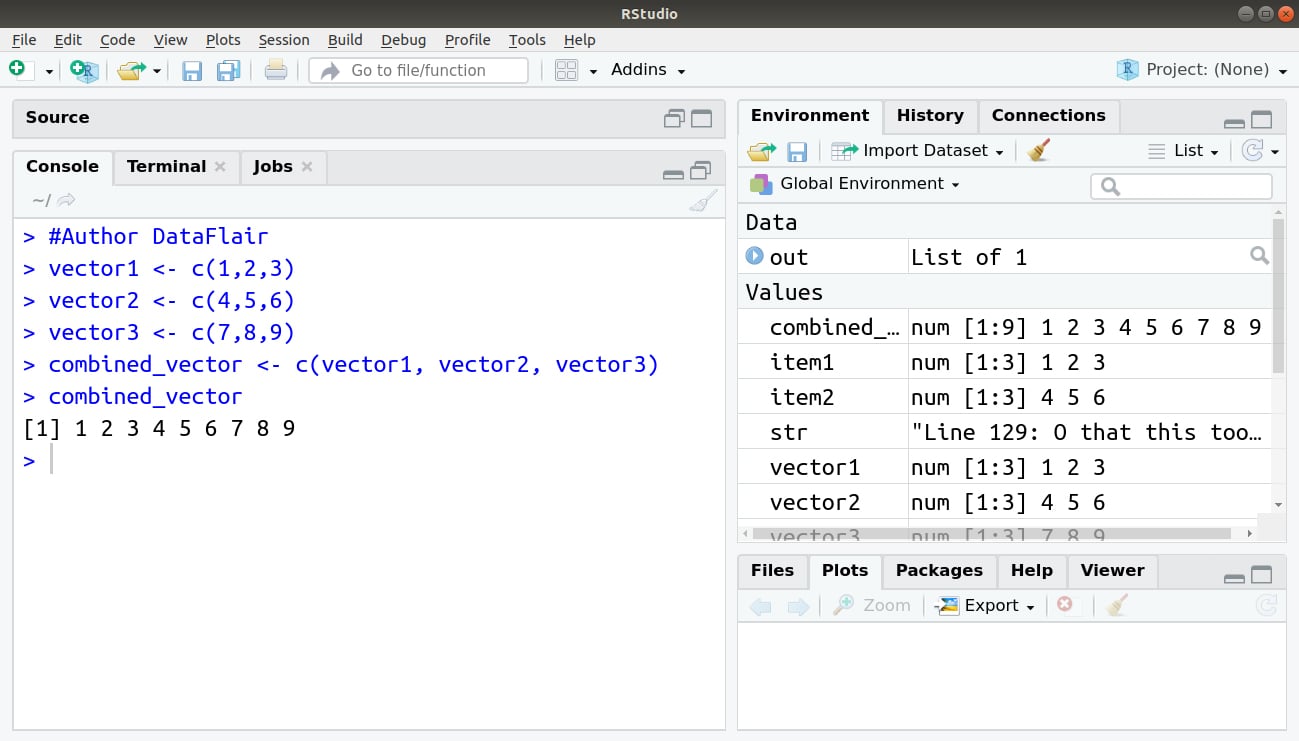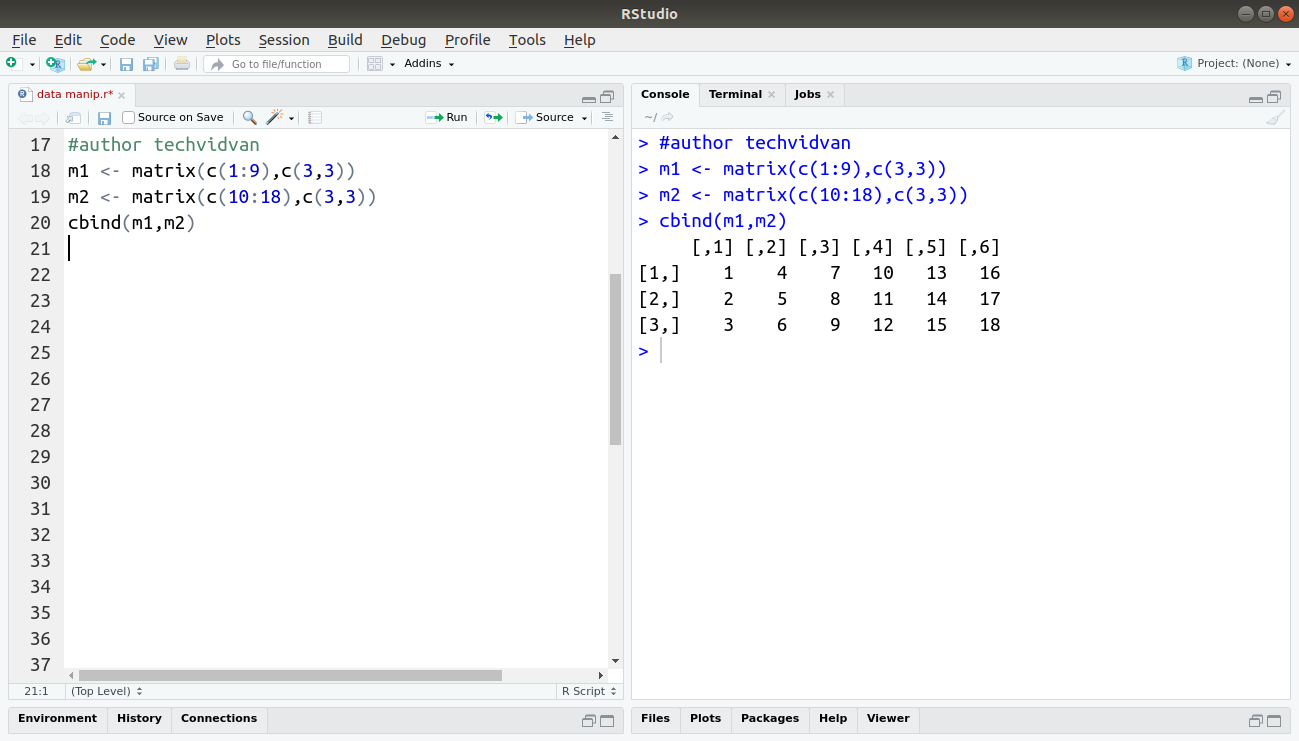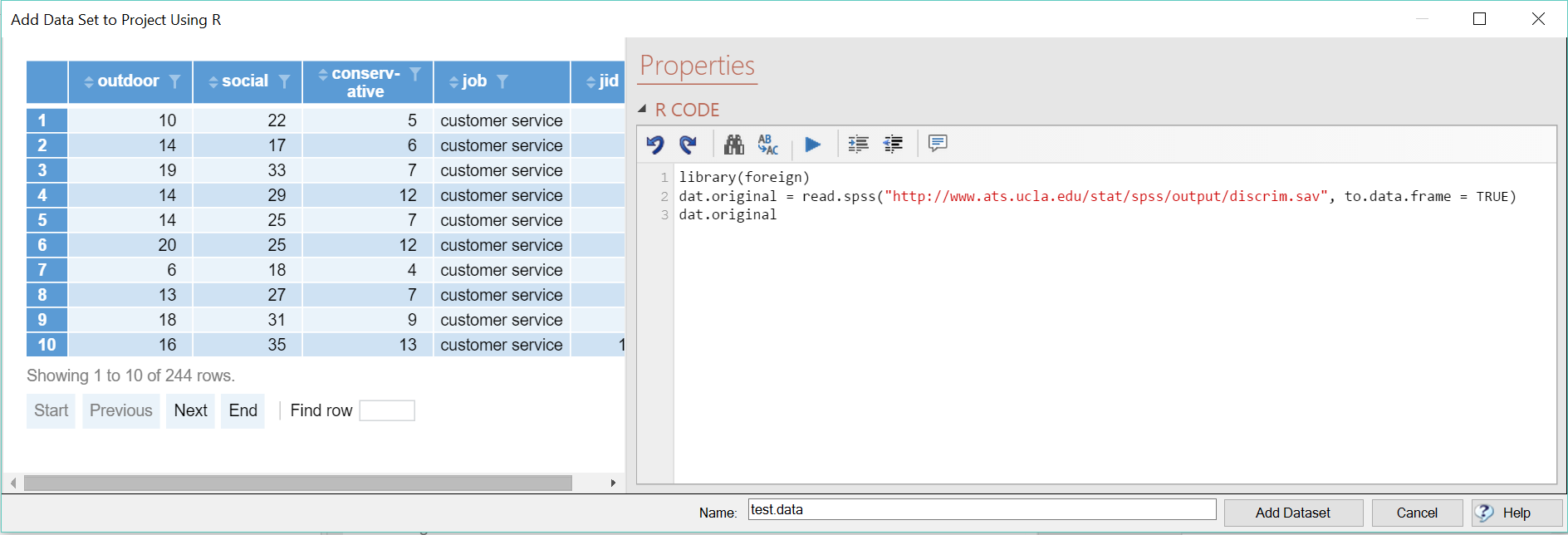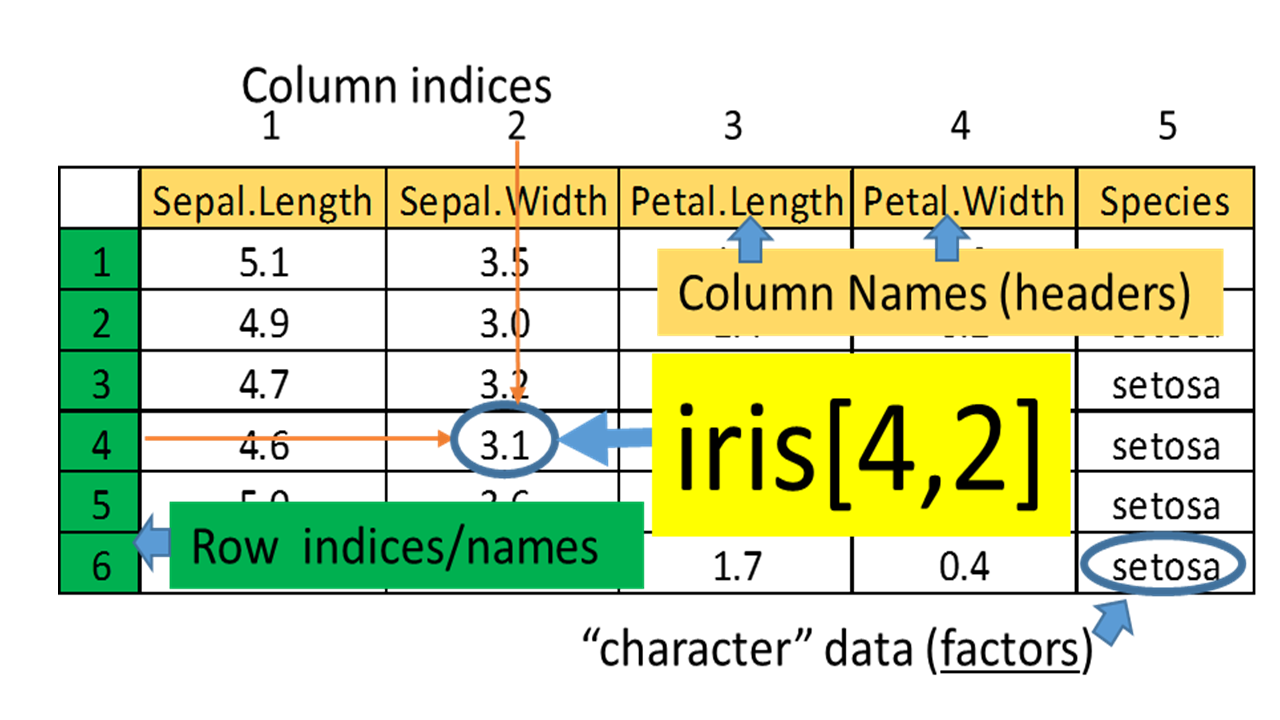
Merging and appending datasets with dplyr (R) Pere A. Taberner
By using a full join the resulting dataset contains all rows from L and all rows from R regardless of whether or not there's a matching key. The {base} Way. Enough of the theory, let's explore how to actually perform a merge in R. First of, the {base} way. In {base} R you use a single function to perform all merge types covered above.

Creating Simple Dataset in R using Combine and Scan commandR Programming Tutorial R
Introduction This brief post aims at explaining how to merge and append datasets with R, concretely with the package dplyr. First of all, it is important to have installed and loaded the library, i.e. install.packages ("dplyr") and library (dplyr). library (dplyr)

How to Add a New Variable to an Existing Data Set in R. [HD] YouTube
Method 1: Merge Multiple Data Frames Using Base R Suppose we have the following data frames in R: #define data frames df1 <- data.frame(id=c (1, 2, 3, 4, 5), revenue=c (34, 36, 40, 49, 43)) df2 <- data.frame(id=c (1, 2, 5, 6, 7), expenses=c (22, 26, 31, 40, 20)) df3 <- data.frame(id=c (1, 2, 4, 5, 7), profit=c (12, 10, 14, 12, 9))

Importing Data in R Programming Easy to Follow Guide for Beginners! DataFlair
How to merge data in R using R merge, dplyr, or data.table See how to join two data sets by one or more common columns using base R's merge function, dplyr join functions, and the speedy.

Data Manipulation in R Alter, Sample, Reduce & Elaborate Datasets TechVidvan
For very large datasets, consider using the data.table package. It offers a faster merging process compared to the base R merge function. Consistent Data Types: Ensure that the key variables in both datasets have the same data type. For instance, merging on a character variable in one dataset and a factor in another can lead to unexpected results.

How to append input file name to corresponding list output index in R Stack Overflow
Here are two ways to append data frames in R: Using rbind () Using nrow () Method 1: Using rbind () The "rbind ()" function is used to append all data from the second data frame at the end of the first data frame. Syntax rbind (a, b) Parameters The a is input data. The b is the data that needs to be binded. Visualization

How to get familiar with datasets in R by YouTube
1. Learn about binds and joins 2. Combine all data into a single table 3. Resolve all issues to eliminate error messages for the final table (NA's are okay as long as the structure is right) Load.

How to Append Data Frames in R
Method 1: Use rbind () to Append Data Frames This first method assumes that you have two data frames with the same column names. By using the rbind () function, we can easily append the rows of the second data frame to the end of the first data frame. For example:

How to Use R to Add Data Sets Q Help
2. R Append Two Data Frames into a Single Data Frame. To append data frames in R, use the rbin() function. This function appends all records from the second data frame at the end of the first data frame. and the rbind() function requires the data frames you are trying to append to have the same columns.

RstudioBeginners step by step guide to merge multiple datasets in R YouTube
Method 4: Merge Based on Multiple Unmatched Column Names. merge(df1, df2, by. x =c(' var1 ', ' var2 '), by. y =c(' variable1 ', ' variable2 ')) The following examples show how to use each method in practice. Example 1: Merge Based on One Matching Column Name. The following code shows how to merge two data frames in R based on one matching.

Merging and appending datasets with dplyr (R) Pere A. Taberner
17. Merging. Merging is the process of combining multiple datasets into a single dataset. Examples include adding inflation factors to panel data to adjust income to today's rates, or adding county-level statistics to individual-level data. We will consider two types of merges: adding columns from one dataset to another, and adding rows.

R Append New Row To Dataframe
You can merge datasets horizontally by making use of "cbind ()". Let us merge data frames 1 and 3 using rbind () -. Code: #merging dataframes 1 and 3 horizontally. cbind (df1,df3) Output: company models company sales 1 Ford 10 Ford 2345 2 BMW 23 BMW 3921. You can see that the common column i.e. "company" appears twice.

Chapter 1 Step into R programmingthe iris flower dataset Learn R through examples
In this article, we learned different methods of data merging in R. We have learned how to create a data frame manually and read from CSV file, then we join data in data frames by inner join, left.

Append Rows To Dataframe R Loop
22 Yes. Use rbind () command. combineddataset = rbind (dataset1, dataset2) Hope that helps. Share Follow

List of Built in Datasets in R Rstats 101
At the high level, there are two ways you can merge datasets; you can add information by adding more rows or by adding more columns to your dataset. In general, when you have datasets that have the same set of columns or have the same set of observations, you can concatenate them vertically or horizontally, respectively.

R Programming Tutorial Combining multiple datasets in R R Multiple Datasets YouTube
Data frames to combine. Each argument can either be a data frame, a list that could be a data frame, or a list of data frames. When row-binding, columns are matched by name, and any missing columns will be filled with NA. When column-binding, rows are matched by position, so all data frames must have the same number of rows.